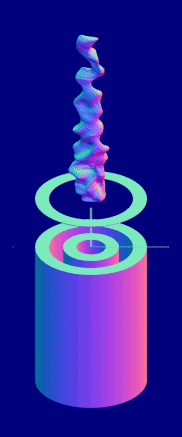Newsletter 2016.11 Index
Theme : "Mechanical Engineering Congress, 2016 Japan (MECJ-16)"
|
Instantaneous 3D-CT(Computer Tomography) measurements with instantaneous multi-directional photography for unsteady flame/flow phenomena; and 3D printing of 3D reconstructed distributions
Yojiro ISHINO |
Abstract
Multi-directional simultaneous photography technique has been combined with computer tomography (CT) technique to obtain instantaneous / time series 3D distribution of unsteady combustion and ununiform density flow fields; resuting in accomplishment of non-scaning 3D-CT ahead of medical CT engineering. Two types methodology has been employed. For a first phase of this study, a direct photography was selected to capture instantaneous / time-series 3D distributions of light emission intensity of turbulent / developing flames as fuel consumption rate distribution. The simultaneous multi-directional photography was made with hand-made multi (40,158)-lens cameras and multi-mirror optical system. The 158-lens camera won the Guinness world record as "most lenses in a photographic camera".
In a second phase, in order to fit for higher speed phenomena, e.g. high speed burner flames and high speed jets, quantitative schlieren photography was introduced. Twenty directional schlieren camera with flash light sources, which has a size of approx. 2 m diameter, captured the multi-directional quantitative schlieren images of high speed burner flames, expanding flame kernels and a supersonic jet. Using CT procedure, instantaneous 3D density distributions of theirs has been reconstructed. The 3D data has also been 3D-printed by 3D printer. We emphasized the importance in presentation of own research to diverse audience; e.g. the 3D solid model of the result data can bring own result even to blind juvenile audience.
Key words
Multi-directional Schlieren Technique, 3D-CT(Computer Tomography), 3D printing, Flame, Guinness record, Multi-lens camera
Figures

Multi-directional schlieren system for 3D-CT measurement
of instantaneous 3D density distribution

3D CG of 3D-CT data of a turbulent premixed flame

3D printed solid models of 3D-CT data of turbulent premixed flames


